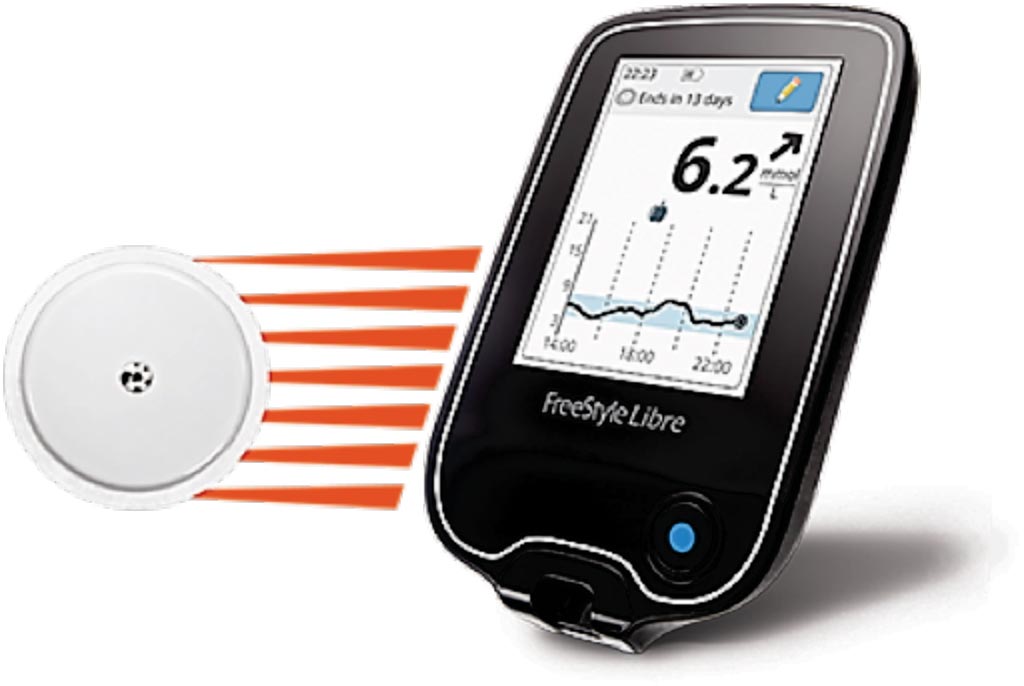Monitoring System No Longer Requires Fingerstick Calibration
By LabMedica International staff writers
Posted on 10 Oct 2017
People with diabetes must regularly test and monitor their blood sugar to make sure it is at an appropriate level, which is often done multiple times per day by taking a fingerstick sample and testing it with a blood glucose meter.Posted on 10 Oct 2017
Typically patients use results of a traditional fingerstick test to make diabetes treatment decisions; however, fingerstick testing is not needed to inform appropriate care choices or to calibrate glucose levels with a continuous glucose monitoring system.

Image: The FreeStyle Libre Flash Glucose Monitoring System (Photo courtesy of Abbott).
The US Food and Drug Administration (Silver Springs, MD, USA) has approved the FreeStyle Libre Flash Glucose Monitoring System (Abbott Diabetes Care Inc., Alameda, CA, USA), the first continuous glucose monitoring system that can be used by adult patients to make diabetes treatment decisions without calibration using a blood sample from the fingertip (often referred to as a “fingerstick”).
The system reduces the need for fingerstick testing by using a small sensor wire inserted below the skin’s surface that continuously measures and monitors glucose levels. Users can determine glucose levels by waving a dedicated, mobile reader above the sensor wire to determine if glucose levels are too high (hyperglycemia) or too low (hypoglycemia), and how glucose levels are changing. It is intended for use in people 18 years of age and older with diabetes; after a 12-hour start-up period, it can be worn for up to 10 days.
The FDA evaluated data from a clinical study of individuals aged 18 and older with diabetes, and reviewed the device’s performance by comparing readings obtained by the FreeStyle Libre Glucose Monitoring System to those obtained by an established laboratory method used for analysis of blood glucose. Risks associated with use of the system may include hypoglycemia or hyperglycemia in cases where information provided by the device is inaccurate and used to make treatment decisions, as well as mild skin irritations around the insertion site. It does not provide real-time alerts or alarms in the absence of a user-initiated action; for example, it cannot alert users to low blood glucose levels while they are asleep.
Donald J. St. Pierre, the acting director of the FDA’s Office of In Vitro Diagnostics and Radiological Health, said, “The FDA is always interested in new technologies that can help make the care of people living with chronic conditions, such as diabetes, easier and more manageable. This system allows people with diabetes to avoid the additional step of fingerstick calibration, which can sometimes be painful, but still provides necessary information for treating their diabetes, with a wave of the mobile reader.”













